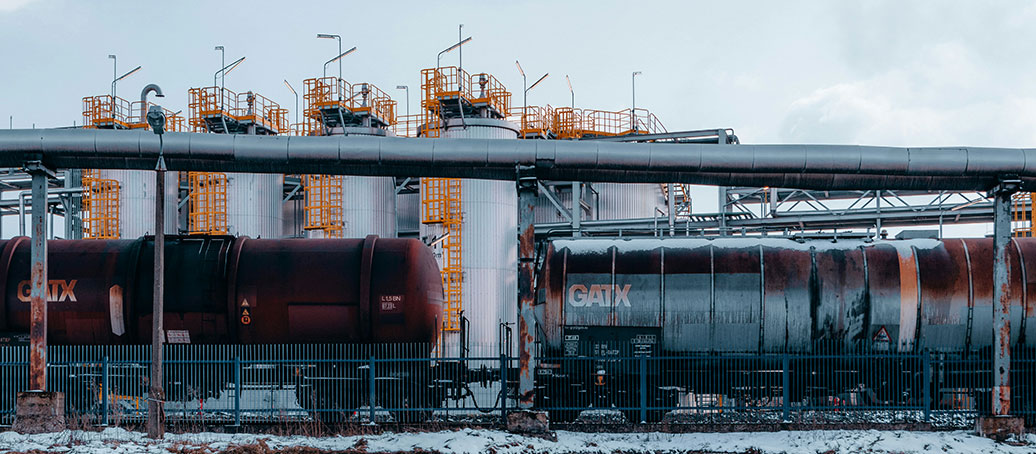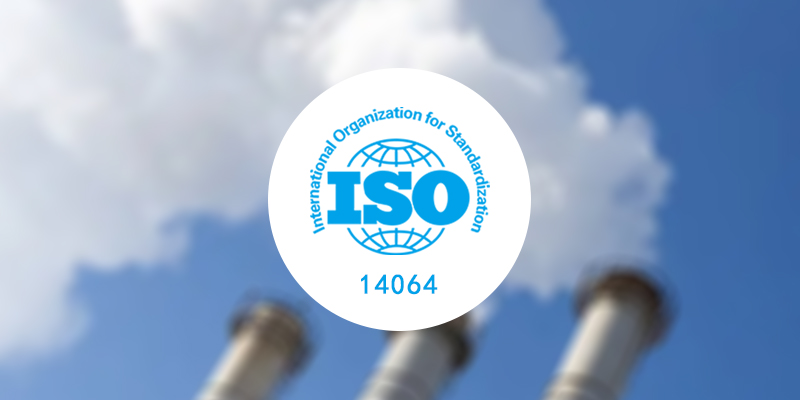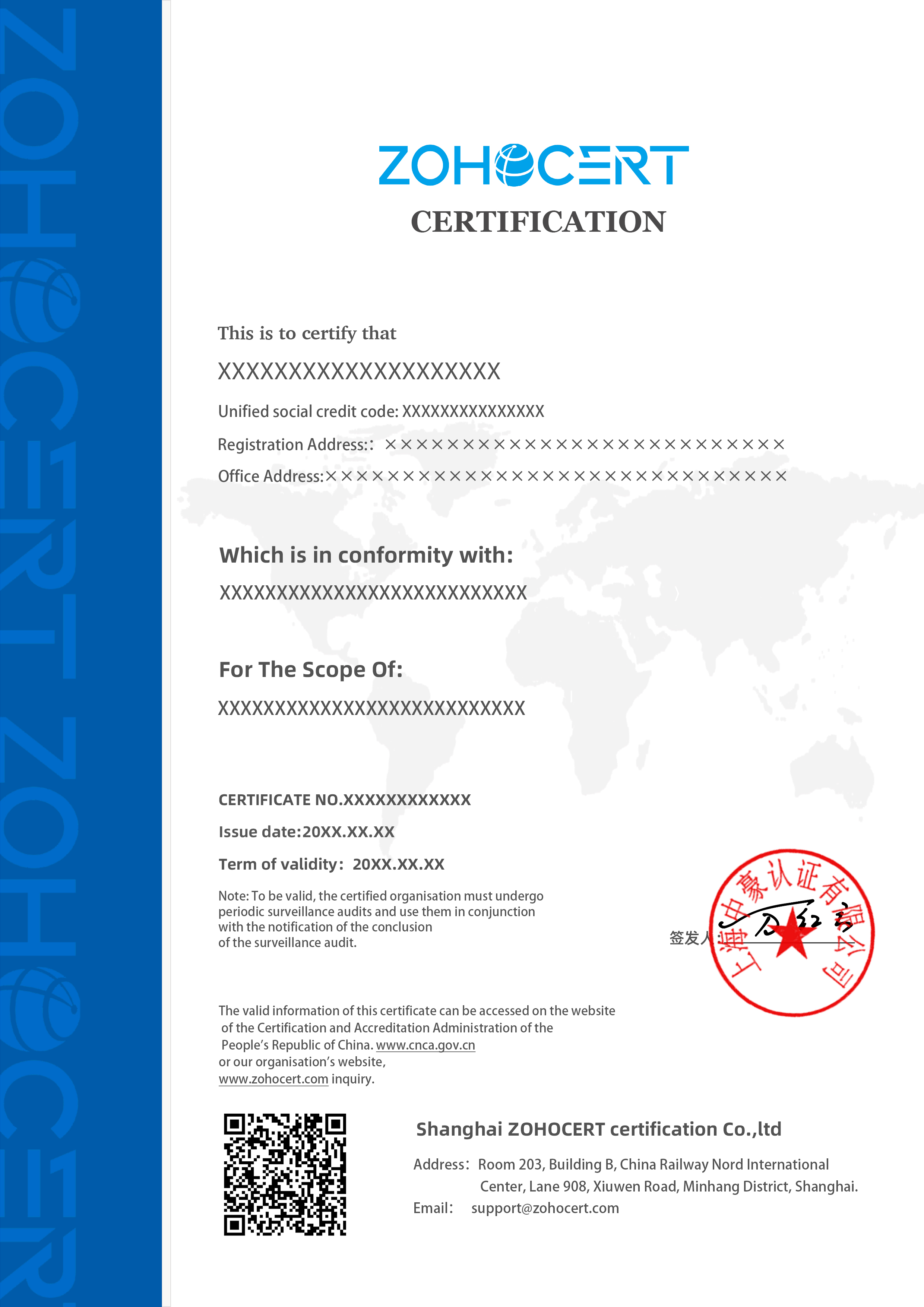-
 System CertificationZOHOCERT establishes trust with excellent quality, conveys trust with the concept of Zhongzheng, and enhances customers' ability to respond to risks and...
System CertificationZOHOCERT establishes trust with excellent quality, conveys trust with the concept of Zhongzheng, and enhances customers' ability to respond to risks and... -
 Product CertificationZOHOCERT establishes trust with excellent quality, conveys trust with the concept of Zhongzheng, and enhances customers' ability to respond to risks and...
Product CertificationZOHOCERT establishes trust with excellent quality, conveys trust with the concept of Zhongzheng, and enhances customers' ability to respond to risks and...
-
 Public DocumentsZOHOCERT establishes trust with excellent quality, conveys trust with the concept of Zhongzheng, and enhances customers' ability to respond to risks and challenges, as well as their sustained commercial value, to win trust!
Public DocumentsZOHOCERT establishes trust with excellent quality, conveys trust with the concept of Zhongzheng, and enhances customers' ability to respond to risks and challenges, as well as their sustained commercial value, to win trust! -
 Case PresentationZOHOCERT establishes trust with excellent quality, conveys trust with the concept of Zhongzheng, and...
Case PresentationZOHOCERT establishes trust with excellent quality, conveys trust with the concept of Zhongzheng, and...


Certification Description
■ISO 14064-1/2/3 Greenhouse Gas Emission Verification Certification
ISO 14064 is one of the best international models for managing, reporting and verifying greenhouse gas information and data. The standard accounting for greenhouse gases, including carbon dioxide (CO2), methane (CH4), nitrous oxide (N2O), hydrofluorocarbons (HFCs), perfluorocarbons (PFCs), sulfur hexafluoride (SF6), nitrogen trifluoride (NF3) seven.
ISO 14064 contains the following three parts (scope):
ISO 14064-1:norms and guidelines for the quantification and reporting of greenhouse gas emissions and removals at the organizational level;
ISO 14064-2:Specifications and guidelines for the quantification, monitoring and reporting of greenhouse gas emission reductions or enhancement of removals at the project level;
ISO 14064-3:norms and guidelines for the validation and verification of greenhouse gas declarations.
Among them, the ISO14064-1 sets out the principles and requirements for the design, development, management and reporting of GHG(Greenhouse gas) inventories at the organizational (enterprise) level. The ISO 14064-1:2006 version of the standard was released on March 1, 2006. In December 2018, the ISO organization updated and released the ISO 14064-1:2018 version of the standard. The new version of the standard has higher requirements for indirect emissions. Compared with the 2006 version, which divides indirect emissions into "indirect emissions from energy use" and "other indirect emissions", the new version of the standard further refines other indirect emissions.
According to ISO 14064-1:2018, the organization's greenhouse gas emissions can be divided into six categories:
Category I:direct greenhouse gas emissions. Greenhouse gas emissions from greenhouse gas emission sources owned or controlled by the organization, usually divided into fixed source combustion emissions, mobile source combustion emissions, fugitive emissions, process emissions and other types;
Category II:input energy. The indirect greenhouse gas emissions resulting from the production of external electricity, heat, or steam consumed by the organization.
category three:transport. Usually refers to indirect greenhouse gas emissions from upstream or downstream transportation activities related to the organization's production and operation activities, but not directly controlled by the organization.
category four:organizations. Usually refers to indirect greenhouse gas emissions from the procurement of goods or services related to the organization's production and operation activities.
category five:indirect greenhouse gas emissions related to the use of tissue products. Usually refers to the indirect greenhouse gas emissions resulting from the use of an organization's products or services.
category six:indirect greenhouse gas emissions from other sources. Usually refers to indirect greenhouse gas emissions that cannot be included in the above categories.
■ISO 14064-1/2/3 certification process
1. Submission of application materials;
2, our consulting teacher docking to assist enterprises to sort out the audit documents;
3. Contract review and audit arrangement;
4. On-site audit;
5, report, certificate acquisition;
■ISO 14064-1/2/3 Certification
ISO14064-1 can help enterprises to establish GHG emission inventory, form GHG emission self-inventory report, formulate complete GHG management manual and procedure documents, and obtain third-party GHG verification report and certification certificate.
ISO14064-1 audit and certification can enable enterprises to master their own GHG information from GHG data, management system and other dimensions, which is an important basic work for enterprises to disclose greenhouse gas emission information, set carbon emission reduction targets, respond to supply chain customer requirements, highlight climate ambition and adapt to the transformation of low-carbon economy.
Specifically, the specific role is as follows:
1. Improve consistency, transparency and credibility in GHG quantification, monitoring, reporting and emission reductions;
2. Identify and manage GHG-related responsibilities, assets and risks;
Support the design, development and implementation of comparable and consistent GHG plans or programmes;
4. Develop sound internal mechanisms for the quantification, management and reporting of GHG emissions;
5. Facilitate the development and implementation of the organization's future GHG management strategies and plans;
6. Meet the requirements of upstream and downstream customers in the supply chain for greenhouse gas emission disclosure and greenhouse gas performance target setting.
■ZOHOCERT
Is a professional service organization that has been deeply involved in the IT information industry for many years.
Has a number of senior academic management experts with more than 20 years of practical experience.
High-quality IT expert team services with a nationalized vision
Scope of Certification
ISO14064 standard include six aspects:
Category 1: Direct greenhouse gas emissions, including emissions from combustion of stationary sources, combustion of mobile sources, emissions from industrial processes, fugitive emissions, etc. within the boundaries of the organization;
Category 2: Indirect emissions from input energy, I .e., indirect emissions from input electricity and heat;
Category 3: Indirect emissions from transportation, including emissions from raw and auxiliary materials from suppliers to the organization, emissions from the organization's products to downstream customers, emissions from employee commuting and travel, etc;
Category 4: Indirect emissions of products used by the organization, including emissions of products purchased by the organization in the manufacturing process, emissions of solid or liquid waste treatment processes exported by the organization, etc;
Category 5: Emissions related to the use process of the organization's products, including emissions from the use of the products sold by the organization throughout their life cycle, emissions related to the scrapping process of the products sold by the organization, etc;
Category 6: Other indirect emission sources, special emission sources that cannot be included in the above five categories, such emissions shall be defined by the organization.
ISO 14064 can be applied:
Corporate risk management: for example, identifying and managing climate change-related opportunities and risks;
voluntary actions: such as joining voluntary GHG registration or reporting actions;
GHG markets: trading in GHG quotas and credits;
compliance requirements: submit greenhouse gas reports as required by laws and regulations or **departments.
Certification Scheme
Certification Fees
Certificate Sample








